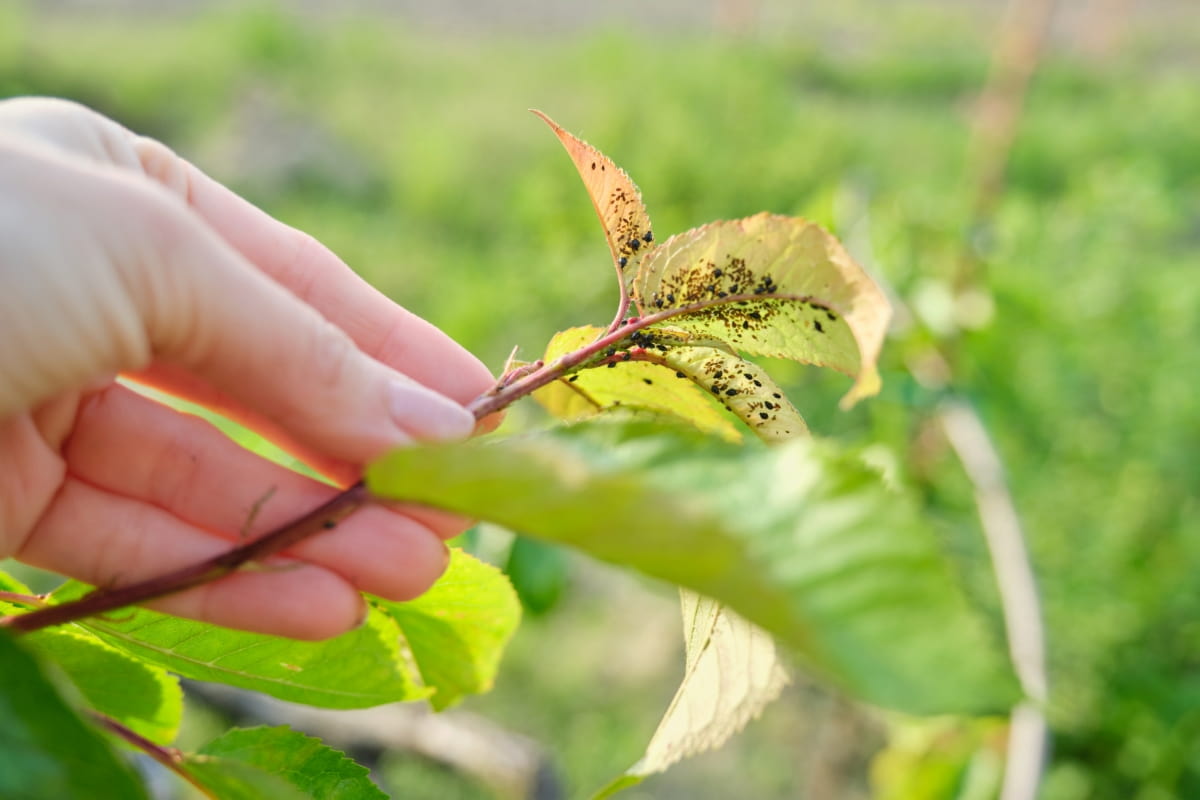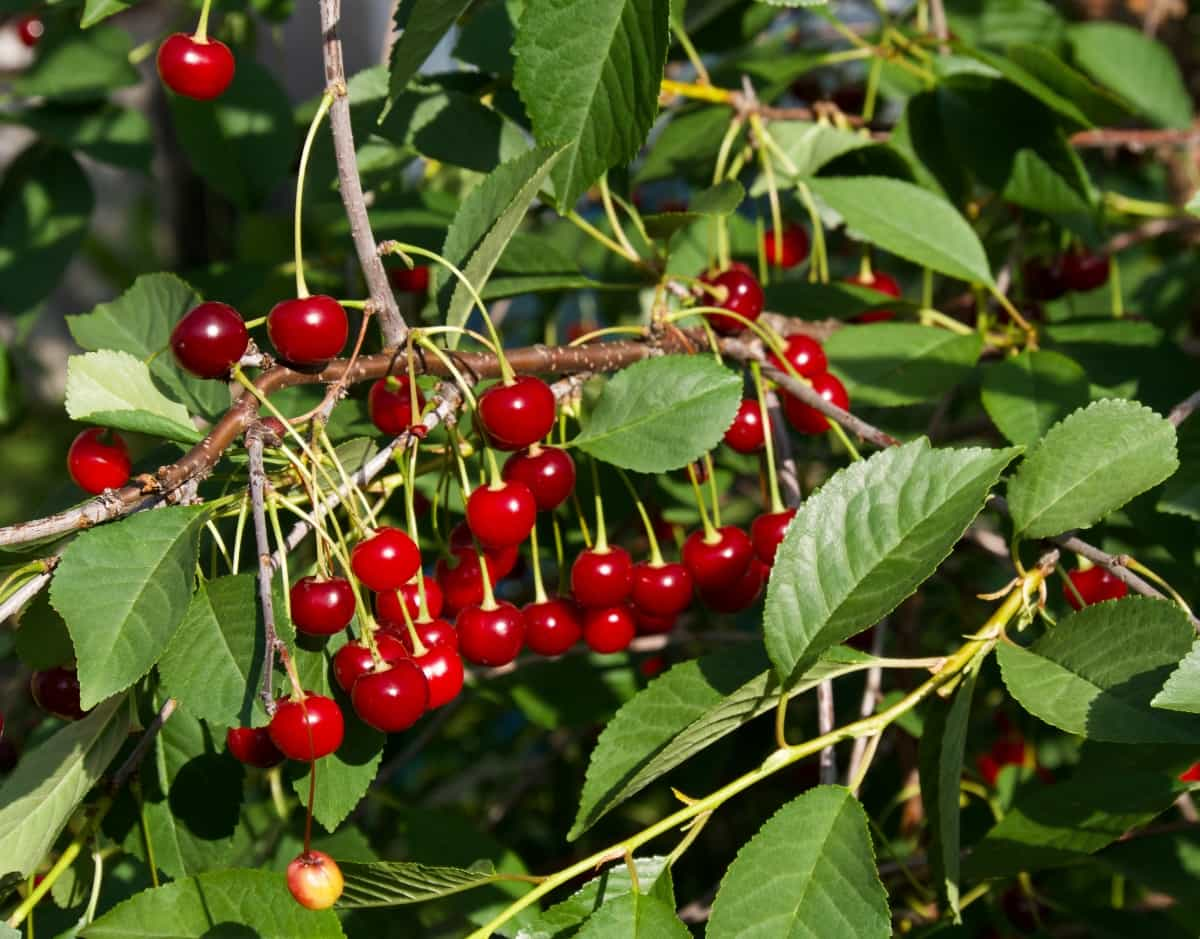Controlling cherry pests is essential for maintaining the health and productivity of cherry trees. Pests can damage the fruit, leaves, and overall tree vitality. If you’re looking to get rid of pests, such as insects, rodents, or other unwanted critters, natural and organic treatments are more eco-friendly and often safer than chemical pesticides.

These methods can help you address pest problems while minimizing harm to the environment, human health, and non-target species. Here, in this article, we will discuss how to get rid of pests using natural and organic treatments.
How to Control Cherry Pests Naturally
Cherry Pests: Identifying the Most Common Pests and Their Impact on Your Crop
Stem Borer (Cherry Stem Borer): The cherry stem borer is a significant threat, as its larvae tunnel into the tree’s stems, causing wilting and dieback of branches. It is essential to prune and destroy infested branches.
Shot Hole Borer/Pin Hole Borer: These tiny beetles create small entry holes in the bark and introduce fungal pathogens into the tree. This can result in the formation of small, shot-hole-like lesions on leaves.
Pear Psylla: While primarily a pest of pear trees, pear psylla can also affect cherry trees. They feed on the tree’s sap and excrete a sticky substance, leading to sooty mold growth on leaves.
Green Peach Aphid: These aphids damage cherry trees by feeding on sap and transmitting plant viruses. They can distort new growth and reduce fruit quality.
Thrips: These small insects feed on cherry flowers and can cause damage by distorting blossoms. Their feeding can lead to reduced fruit set.
Using Neem Oil to Control CherryPests: A Safe and Effective Method
Derived from the neem tree, it acts as an insecticide and fungicide. Neem oil disrupts pests’ feeding and reproductive cycles, such as aphids and mites, while inhibiting fungal diseases. It’s biodegradable and non-toxic to humans and beneficial insects, making it an eco-friendly choice for pest control. Regular applications during the growing season can help protect cherry crops without harming the environment or compromising the safety of the fruit for consumers.
The Role of Beneficial Insects in ControllingCherryPests: Introduction of Predatory Insects
Beneficial insects play a crucial role in cherry pest control. Predatory insects like ladybugs, lacewings, and parasitoid wasps are introduced into cherry orchards to naturally manage pests. Lacewings and Ladybugs feed on aphids and other soft-bodied insects, while parasitoid wasps lay their eggs inside pest insects, ultimately killing them. By establishing a balance between pests and their natural predators, these beneficial insects help maintain a healthier cherry crop without chemical interventions, promoting sustainable and environmentally friendly pest management in cherry orchards.
In case you missed it: How to Control Anemone Pests Naturally: How to Get Rid of Them with Natural and Organic Treatment

Companion Planting: How Planting Certain Plants Together Can Deter Cherry Pests
Companion planting involves strategically planting certain crops or flowers near cherry trees to deter pests. Marigolds, for example, release compounds that repel nematodes and aphids, reducing their presence around cherry trees. Like garlic and chives, alliums can deter cherry pests with their strong aroma. Herbs such as basil and mint have also been used to ward off insect pests. Companion planting complements pest management by creating an environment less favorable for pests, promoting a healthier and more robust cherry crop.
Crop Rotation: How Rotating Your CherryCrop Can Help Control Pests
Crop rotation is an effective strategy for pest control in cherry orchards. By rotating cherry crops with non-related plants like legumes or grains, you disrupt the life cycles of cherry-specific pests and diseases. Pests that depend on cherry trees will find their preferred host unavailable in the next growing season, reducing their populations.
Additionally, diseases that overwinter in the soil will also face reduced survival rates. This natural approach minimizes the need for chemical interventions and promotes healthier cherry trees while maintaining soil health, ultimately contributing to sustainable and pest-resistant orchards over time.
Using Diatomaceous Earth to Control CherryPests: A Non-Toxic and Organic Method
Diatomaceous Earth (DE) is an organic and non-toxic method for cherry pest control. DE is a powdered form of fossilized remains of diatoms and consists of tiny, sharp particles that physically damage the exoskeleton of insects. When pests like aphids or beetles come into contact with DE, they dehydrate and die. DE is safe for humans, pets, and beneficial insects, making it eco-friendly. Regularly applying DE to the base of cherry trees creates a protective barrier against crawling pests, effectively controlling them while maintaining organic integrity in cherry orchards.
In case you missed it: How to Control Guava Pests Naturally: How to Get Rid of Them with Natural and Organic Treatment

Traps and Barriers: How to Use Traps and Barriers to ControlCherryPests
Traps and barriers are valuable tools for cherry pest control. Yellow sticky traps, coated with a sticky substance, attract flying insects like fruit flies and aphids, reducing their populations. Pheromone traps release chemicals to lure specific pests, disrupting their mating patterns. Physical barriers like row covers or netting can shield cherry trees from pests, such as birds, preventing damage.
Copper strips or tree bands placed around tree trunks deter crawling insects like cherry bark beetles. These methods act as a first line of defense, reducing the need for chemical treatments and promoting eco-friendly, sustainable pest management in cherry orchards.
Biological Control: How to Use Parasitic Wasps to Control CherryPests
Parasitoid wasps are a biological control method for cherry pests. They lay their eggs inside pest insects, such as aphids or fruit flies, eventually killing the host. To use parasitoid wasps, purchase them from suppliers specializing in biological pest control. Release them into the cherry orchard at the appropriate time when the target pests are present. These wasps help naturally regulate pest populations and can be a practical and environmentally friendly approach to managing cherry pests while reducing the need for chemical interventions.
Integrated Pest Management (IPM): A Holistic Approach to Controlling CherryPests
Integrated Pest Management (IPM) is a comprehensive cherry pest control strategy combining various techniques. It involves monitoring pest populations, using natural predators like ladybugs, and applying organic pesticides selectively if necessary. IPM also promotes practices like proper orchard sanitation, crop rotation, and maintaining tree health to reduce pest susceptibility.
In case you missed it: How to Control Pear Pests Naturally: How to Get Rid of Them with Natural and Organic Treatment

By considering the entire ecosystem and minimizing the environmental impact, IPM helps manage cherry pests effectively while preserving the long-term health and sustainability of cherry orchards, reducing reliance on chemical treatments.
Conclusion
Natural and organic treatments provide effective alternatives for managing cherry pests while minimizing environmental impact. From beneficial insects to neem oil and cultural practices, these methods promote healthier orchards without relying on chemical interventions. A holistic approach to pest control ensures the longevity and sustainability of cherry crops, making them a safer and more eco-friendly choice for both growers and consumers.
- Deworming Schedule for Dogs/Puppies: A Beginners Guide
- How to Prevent and Control Parasites in Goats
- Beneficial Insects in Pest Management
- Natural Solutions for Pest Control in Flower Gardens
- Types of Fungicides Used in Agriculture
- Common Issues in the Fruit Development Stage of Pomegranate Farming
- Fruit Development Issues in Papaya: Easy Solutions and Treatment
- Soil-Borne Diseases and How to Protect Your Plants
- Practices to Prevent Disease Spread in the Garden